What is the console of Google? If you are taking your first steps in the world of SEO, it sure is one of the first questions that you've made. Google Search Console, once known as Google Webmaster Tools, it is one of the first tools of organic optimization that we learn to use. Of friendly appearance, in line with the rest of the products, digital Alphabet gives us, it is in spite of its apparent simplicity one of the most powerful tools that we have at our disposal... and free. Let's see in detail everything that we can do with it.
What is the console of Google?
Google Search Console is a free tool for webmasters that can control the state of the indexing of the pages of our site and make decisions that will improve your visibility. Accessible through the path https://search.google.com/search-console it allows, among many other, perform the following actions:
- Submit and check the status of indexing our sitemap
- See which pages receive the most number of clicks and impressions on Google search results
- Testing a file robots before putting it in production
- Discover new keywords to add to our content strategy
- See which are the pages most linked to our site
- Monitor the ratio of crawling bot Google
Like so many other tools related to SEO (here we talk about our top 5 SEO tools free preferred), dominate the console of Google takes time and, above all, hours of dedication. Not so much, however, to become familiar with their major functions, that not basic are less useful. What if we started by....
How to use Google Search Console: first steps
The first thing that we're going to see when you agree to this tool is the section ‘Overview’, in which we will see two graphs (Performance and Coverage) and a little further down, a section of Improvements.
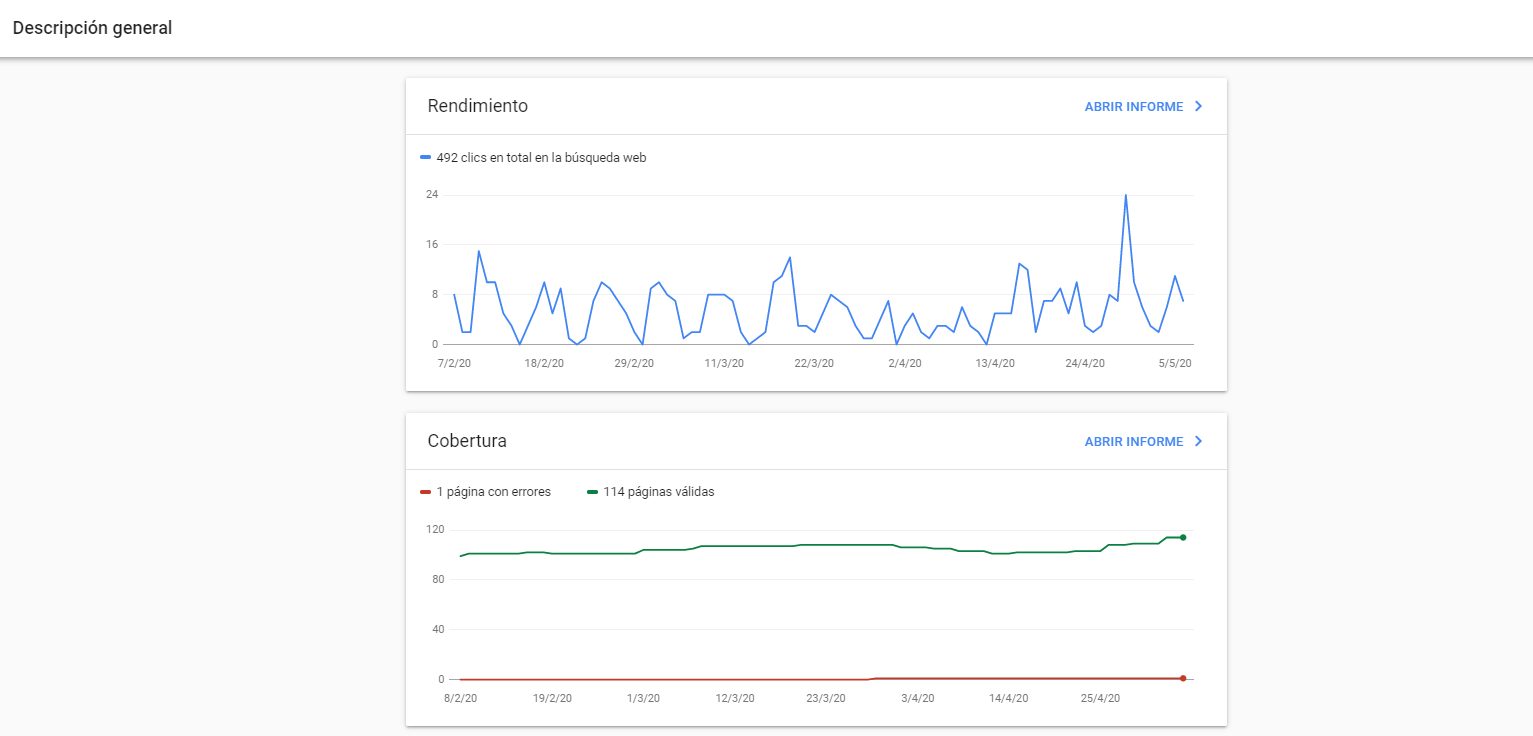
The report Performance
As its name suggests, with the report Performance we will control all those indicators related -worth redundacia - performance of our pages in the Google results. Basically, these four:
- Total clicks
- Total impressions
- Average CTR
- Middle position
Each of the indicators is activated or can be deactivated at will, depending on our needs. For example: let's imagine that we want to see the pages that have the largest number of impressions are generating in page, but, on the contrary, the worse CTR you have, with a view to optimize the content of our landing pages. Turn on the indicators ‘total Impressions’ and ‘average CTR’ what would the easy way.
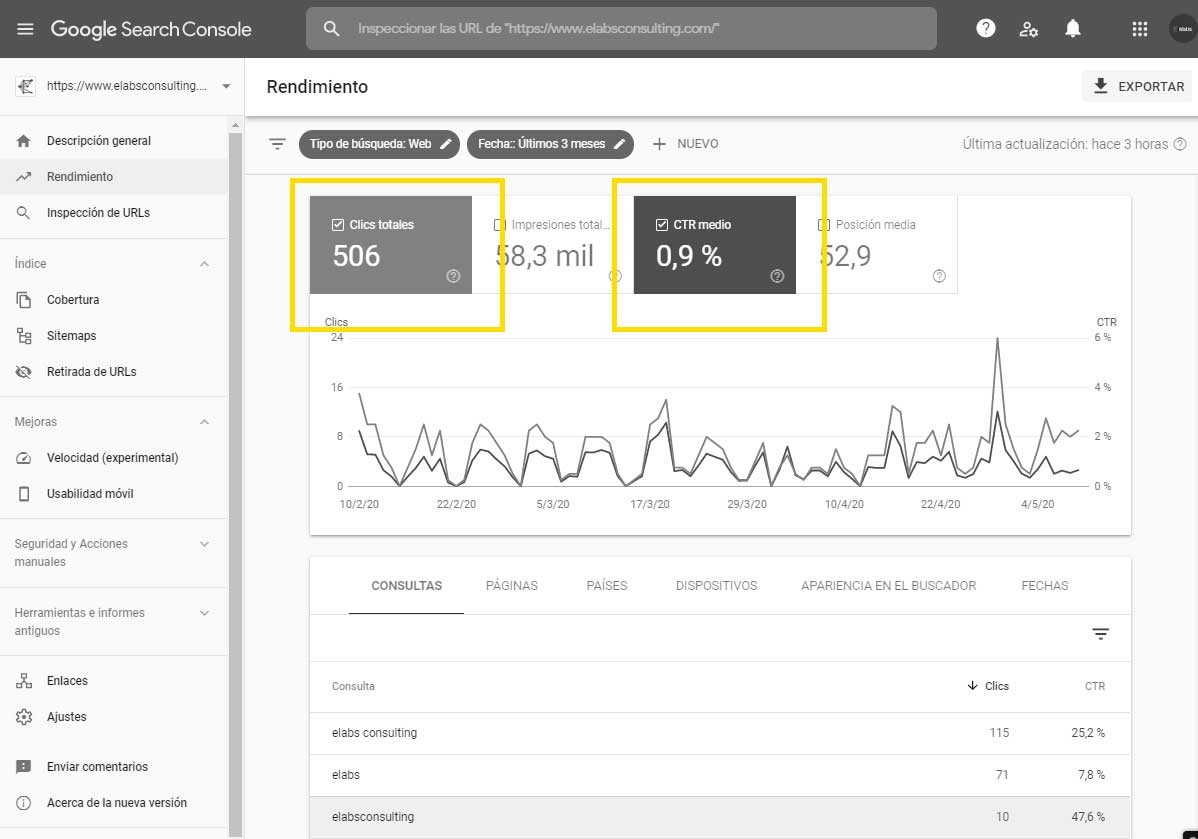
But more interesting to see the overall performance of all of our pages is analysis individualized. Something to do with the lower section, where we will see what is the performance of the indicators mentioned above for the following dimensions:
- Queries
- Pages
- Countries
- Devices
- Look in the finder
- Dates
If we combine these dimensions with the filters located at the top (Search type and Date, see picture below), we can do accurate analysis on our pages. For example: let's say that we want to know what are all the keywords for which it is positioning itself to a specific page. With this report we can find out which search terms are immediately positioned after the first positions (between the fourth and tenth position in the results page of Google) to optimize our web pages according to these and improve our position. The possibilities for analysis are endless.
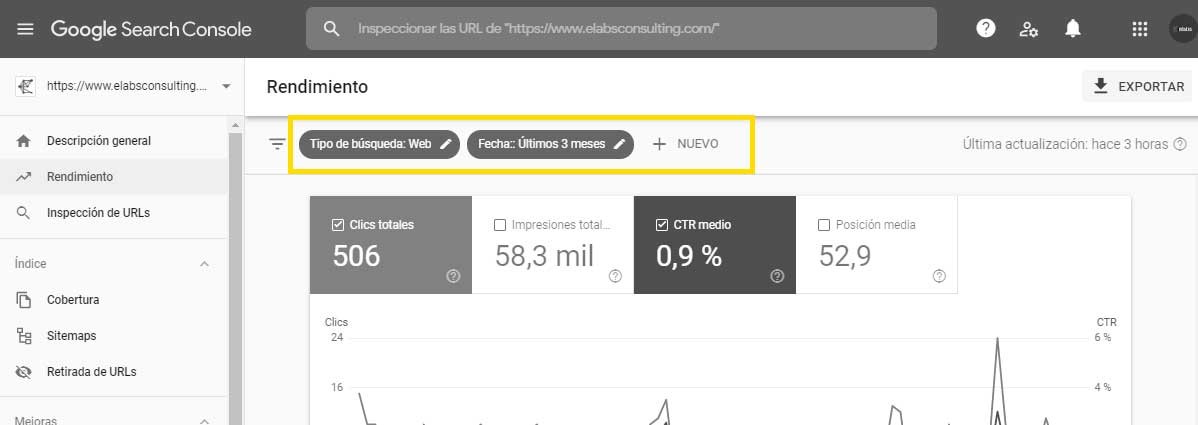
The report Coverage
Coverage is also one of the reports included in the section Index. Their inclusion is not casual, here we are going to be able to control how they are indexed to our content in Google and, more importantly, to identify possible gaps.
As in the report Performance, we have two sub-sections: an upper section (1) with four hover buttons and graphics; and a lower section (2) with the results we get when we check or uncheck the options above.
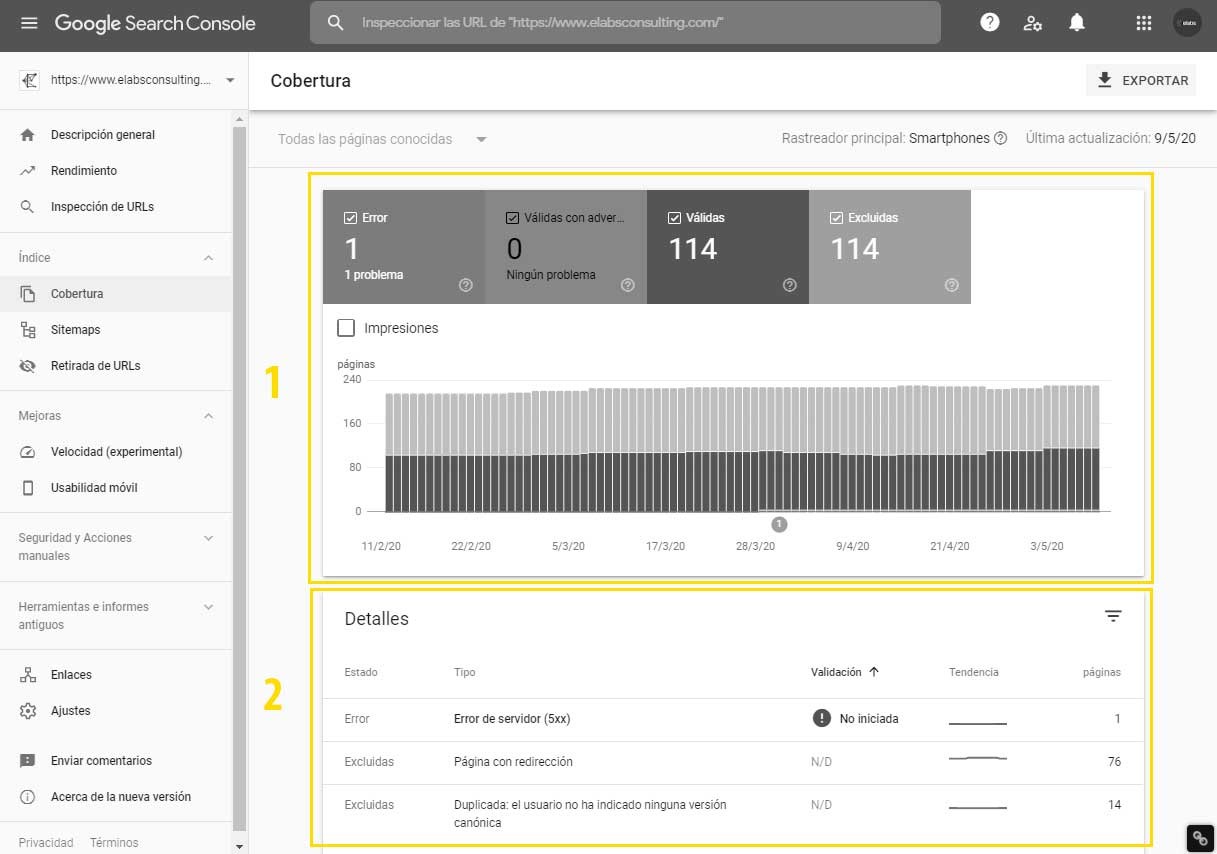
Depending on your state of indexing, we have four different values:
- Error
- Warning
- Excluded
- Valid
Error
Indicates that there is an error condition which causes the page is not indexed in Google, for example, a server error (error 500). Until we resolve the problem, the page will still not be indexed.
Warning
The page itself has been indexed, but there is a problem to solve.
Excluded
Here you will find the list of pages that have been excluded from the index for a number of reasons. These are some of the most common problems:
- Page redirection
- Duplicate: the user has not indicated any canonical version
- Excluded by the inclusion of a label ‘noindex’
- Anomaly tracker
- Crawled: currently no index
- Not found (error 404)
Valid
Pages that have been crawled and which now form part of the index of Google.
Inspection url
One of the most interesting features that were incorporated into the new iteration of the Google Search Console respect to its previous version is the possibility to test individual urls. This is what we are going to see them by clicking in the paragraph Inspection url or directly, by adding the following url into the search box.
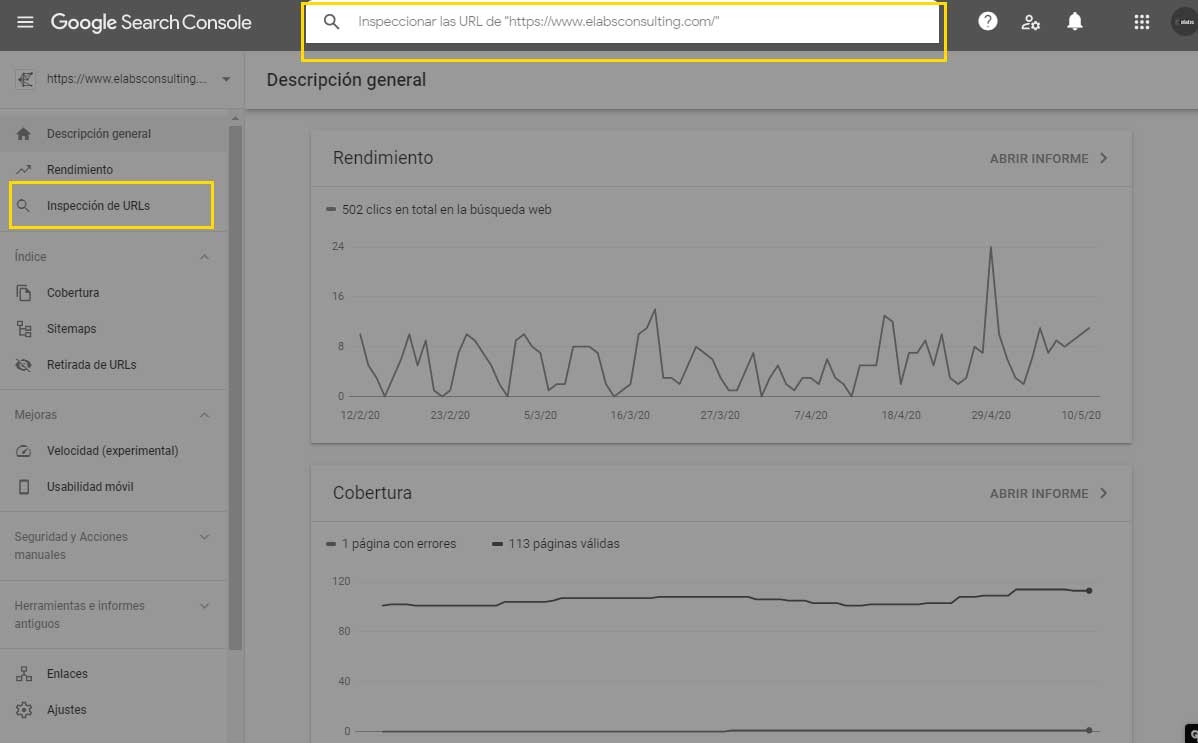
If we test a url, for example the home page of the web Elabs Consulting, we have access to a comprehensive report on the state of indexing and crawl this url in particular.
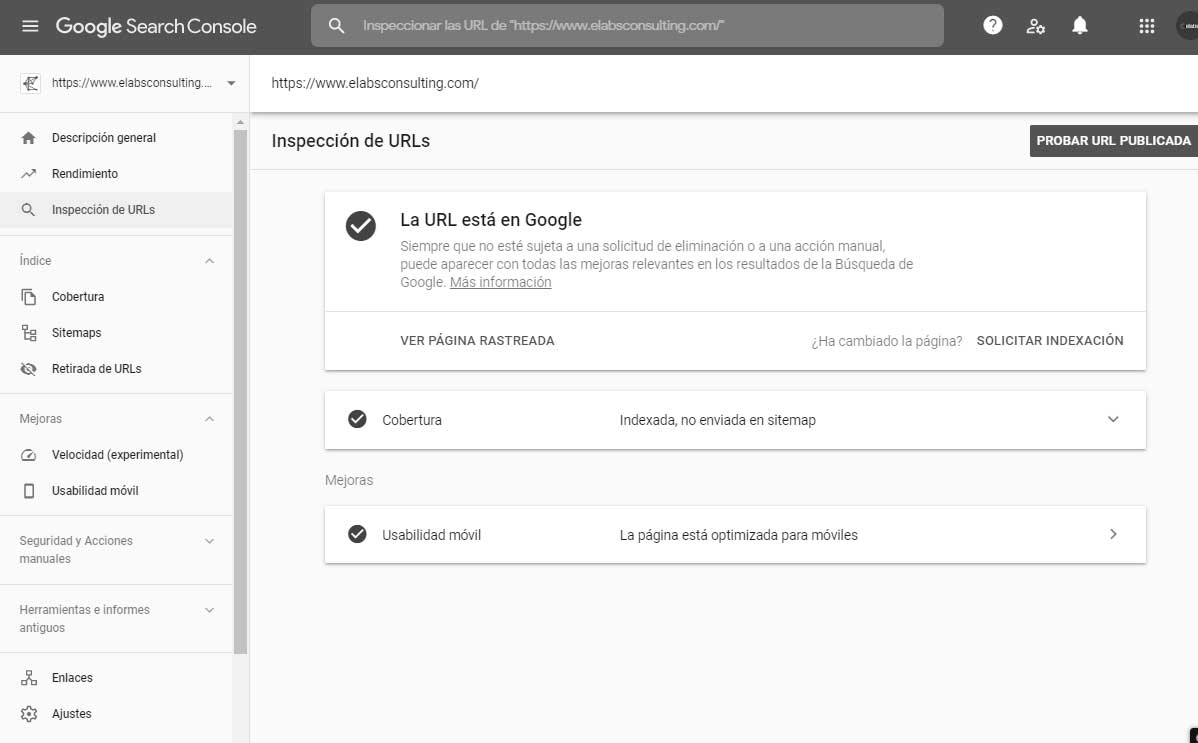
As we can see, the url you entered has been indexed in Google (“The url is on Google”) and has been linked through a crawl newspaper googlebot (Indexed, not submitted in Sitemap). In addition, we are also reports on whether the page is or is not optimized for mobile devices, something of vital importance in times of Mobile First Indexing.
If we find any additional problems or simply want more information about the page, we can click the button ‘Test the published url’ and expand the detail.
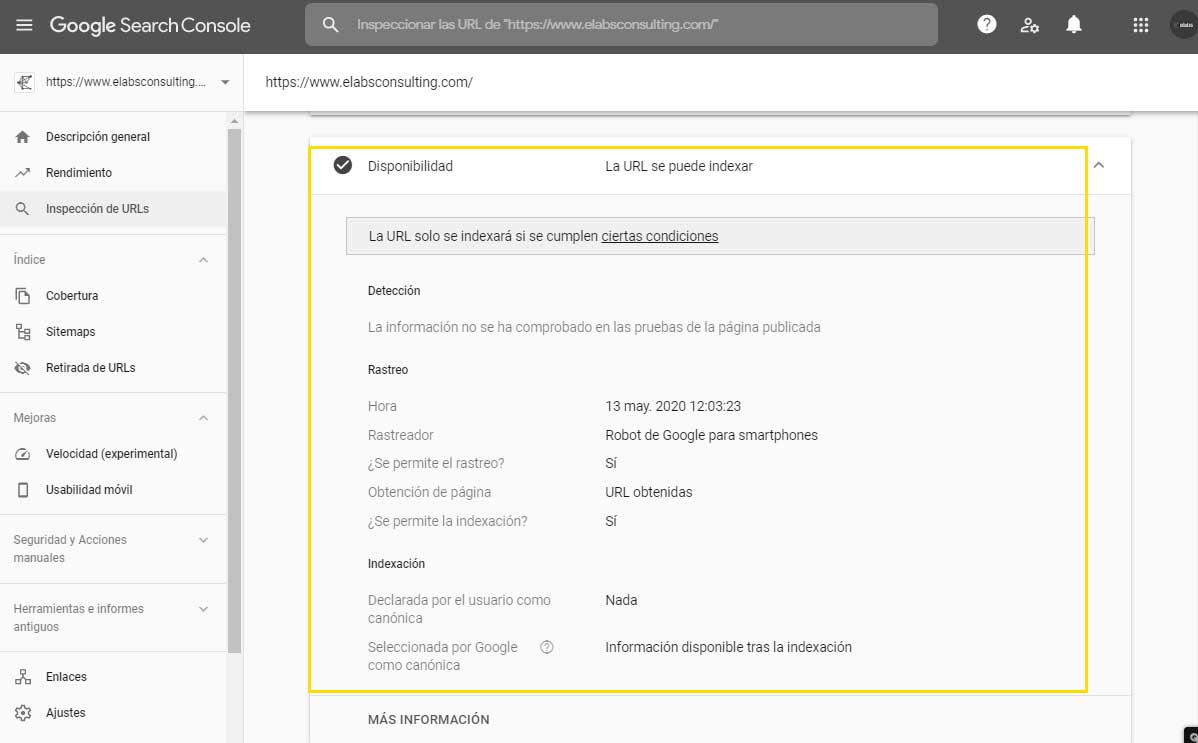
With the extended report, we will be able to see whether or not the crawling and indexing of the website, if this is declared by the user as canon and, in the case that indeed is so, if Google is following our guideline and selected as canonical, something very useful for identifying problems with duplicate content.
Report Sitemaps
The console of Google you also have a specific report to our sitemap; remember it is a file type .xml that should include all the urls with relevant content to our site. Here we are going to be able to add a sitemap giving the button ‘Send’ and control then what is the percentage of indexing (pages indexed on the total number of urls sent) for each sitemap-specific; in the case of which we'll add more of one.
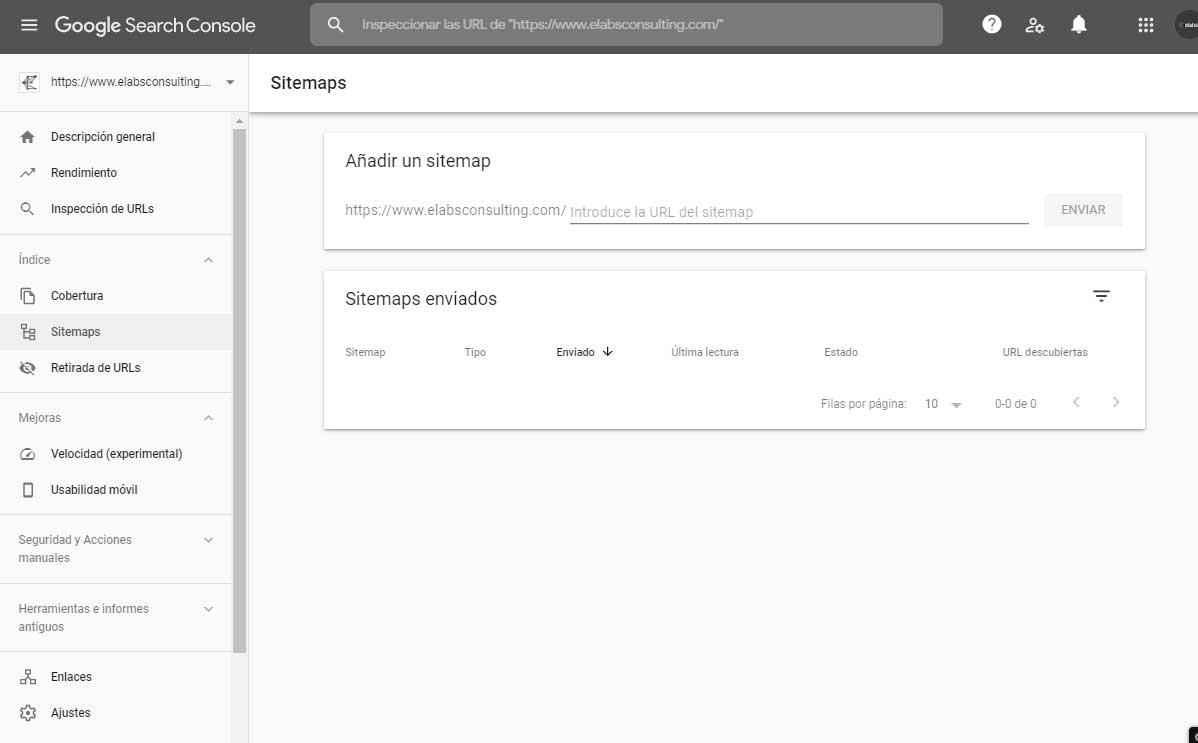
Report Withdrawal of urls
Let's say that for some reason we want to remove urls from Google's index. Maybe we have a problem of online reputation, or to the best we have hacked our web -hopefully not - and we have generated hundreds of pages of garbage that have been indexed. The report Withdrawal of urls will allow us to eradicate the urls of the search results.
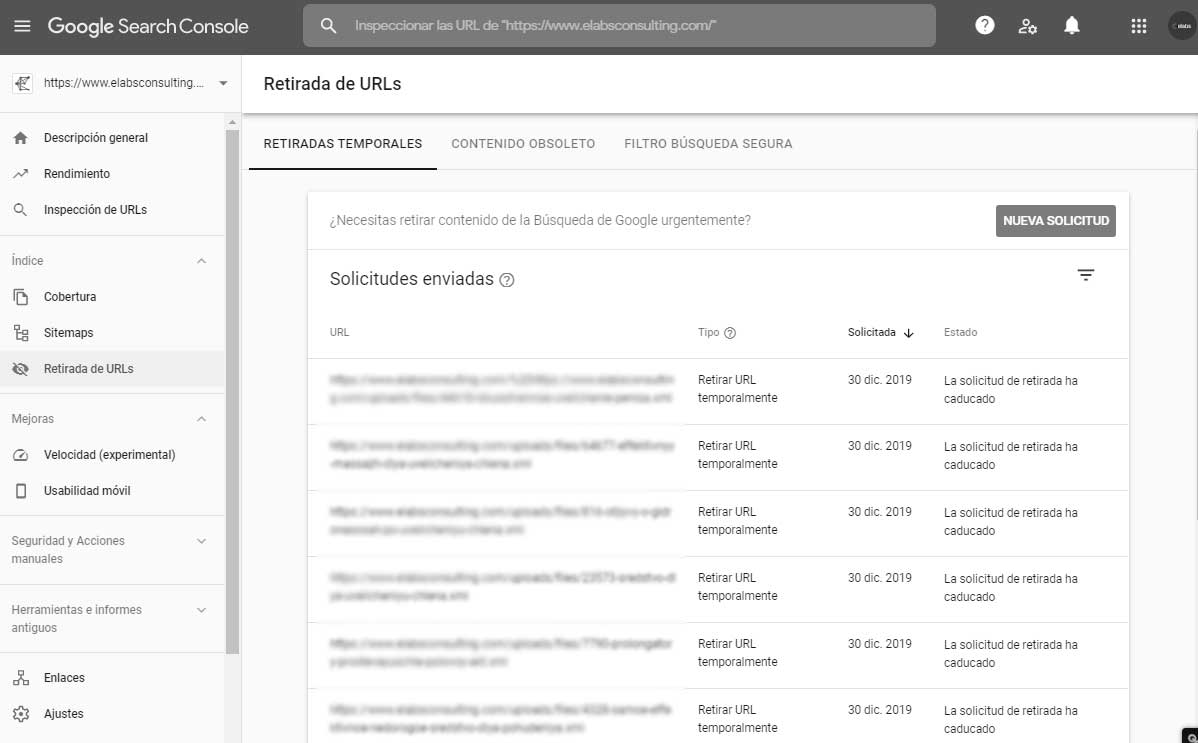
An important point to note here is that we will only be able to enter the urls one at a time, so if we have hundreds of urls to introduce the issue could complicate things quite a bit. To facilitate the rise of urls, we recommend using this Google Chrome extension.
Keep in mind that the urls are removed from the index only temporarily, so that if you do not delete your web access that has allowed him to googlebot index (may be an HTML link, and another from the sitemap, etc), spent time this will add it to its index if it continues by considering the relevant url.
Report mobile Usability
As we mentioned, the adaptability to mobile devices is one of the elements that have been taken in a series of Google in the last few years. This means that we have to be attentive to all the problems related to the usability mobileespecially if our website has not yet taken the step to a type design responsive. Mobile usability is the report that the search engine makes available to us to identify problems of this type.
Judging by the report, the home page of Elabs Consulting is perfectly optimized for mobile devices.
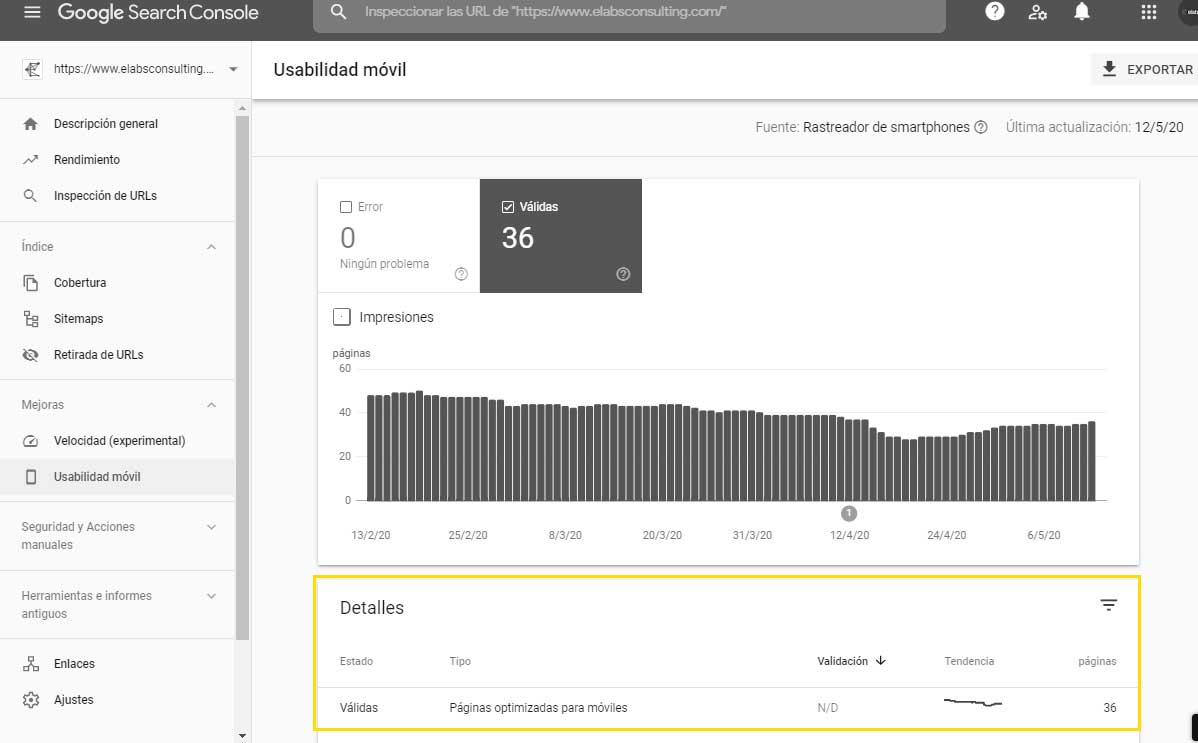
These are some of the common errors that you will find in this report:
- The content is wider than the screen
- The text is too small to read
- The elements that you can click are too close to each other
- Etc.
Tools and reports in the old Search Console
The adaptation of the console of Google to the new interface has been a continuing process in which today we still continue to be immersed. All the improvements that we have seen until now have been introduced graduallyand even some of them have suffered variations with respect to the first version shown. However, there are a number of reports that do not yet have been migrated to the new version but by its utility by force have to be available. Google has solved it temporarily by enabling a section called ‘Tools and reports old’, which we will see the two most interesting.
Report tracking Statistics
A report very helpful to monitor how it behaves Googlebot on our website is Crawl stats. While it is true that an advanced user, you'll find most useful, the data obtained through the logs of the server, we also serves to identify problems in the tracking and see if it is something prompt, or, on the contrary, the beginning of a trend.
Within the report we have three charts, of which the first is the most interesting:
- Pages crawled per day
- Kilobytes downloaded per day
- Download time of a page
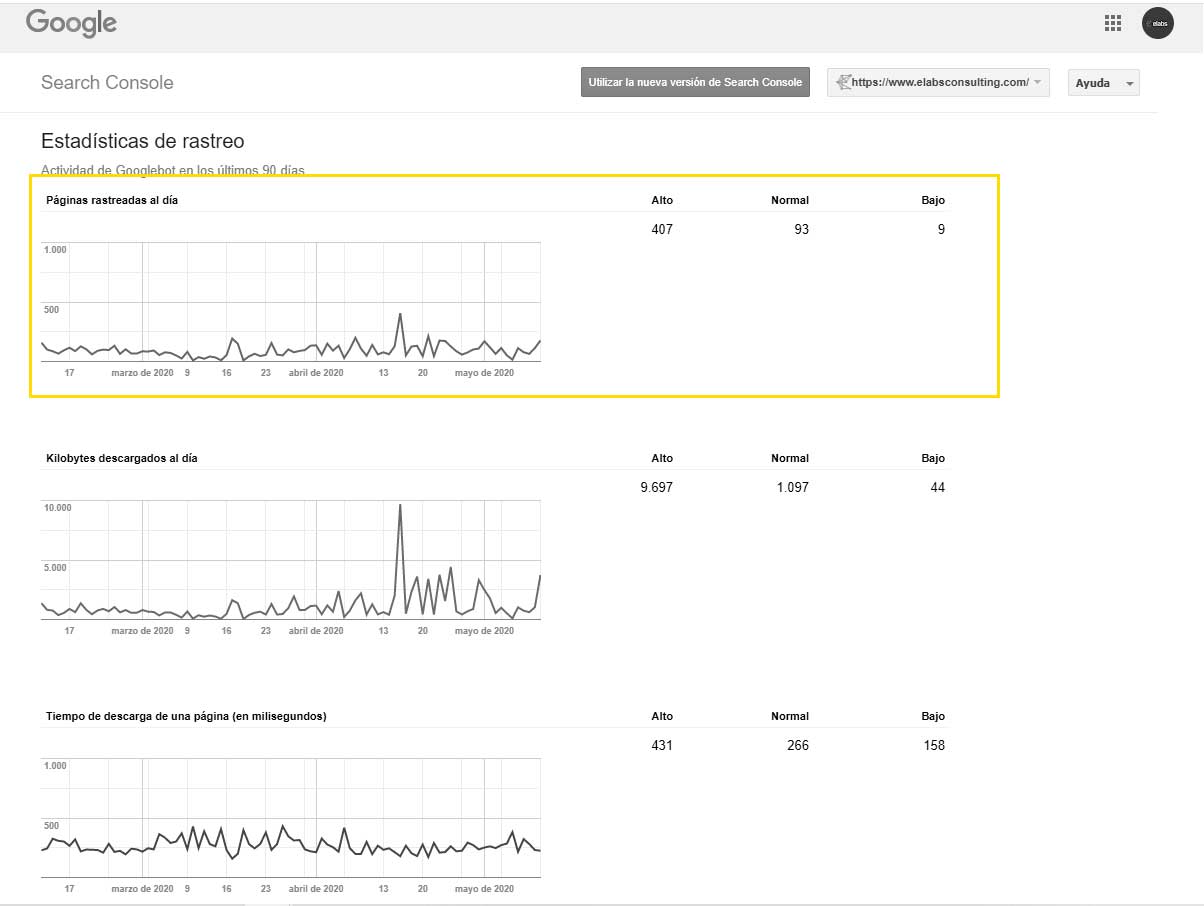
In this way, we're going to be able to see visually what is the normal frequency of crawl on our website, for which we will have to compare these figures with the number of pages that we have. Let's say for example that we have launched a section with dozens of new pages and that we expedite the indexing process by adding them to the sitemap, and reporting to Google. With this report we can see the precise moment at which the seeker reaches to these pages, which should have its correspondence in a spike to the upside in the first chart.
Report url Parameters
If we have a website that includes pages with url parameters this report will be very useful to control your indexing. It is, however, a report that only should be used by users with advanced knowledge in so much that, as Google itself informs the access to this, their misuse can cause the disappearance of our results in the rankings of the search engine.

If we assume the risks and we know exactly how to work with this tool, this report will allow us to tell Googlebot to how you should proceed each time you find yourself with a parameter in the url. Let's imagine that we have a site in which the pages are marked through ?page=, adding ‘page’ as a parameter we can tell the bot that this ‘page content’ and track ‘all the urls’ that you will find this.

However, we insist: this tool should not be used without advanced knowledge of indexing and crawling.
As you can see, the Google Search Console is a essential tool for specialists in organic ranking. Master all of its features requires time and experience, so we encourage you to start with the reports easier, and with time, as your skills go in crescendo, dive deeper into those that require more technical knowledge (the url parameters, for example). The award by the master it is no small thing: greater control over the visibility of our pages in the search rankings.

